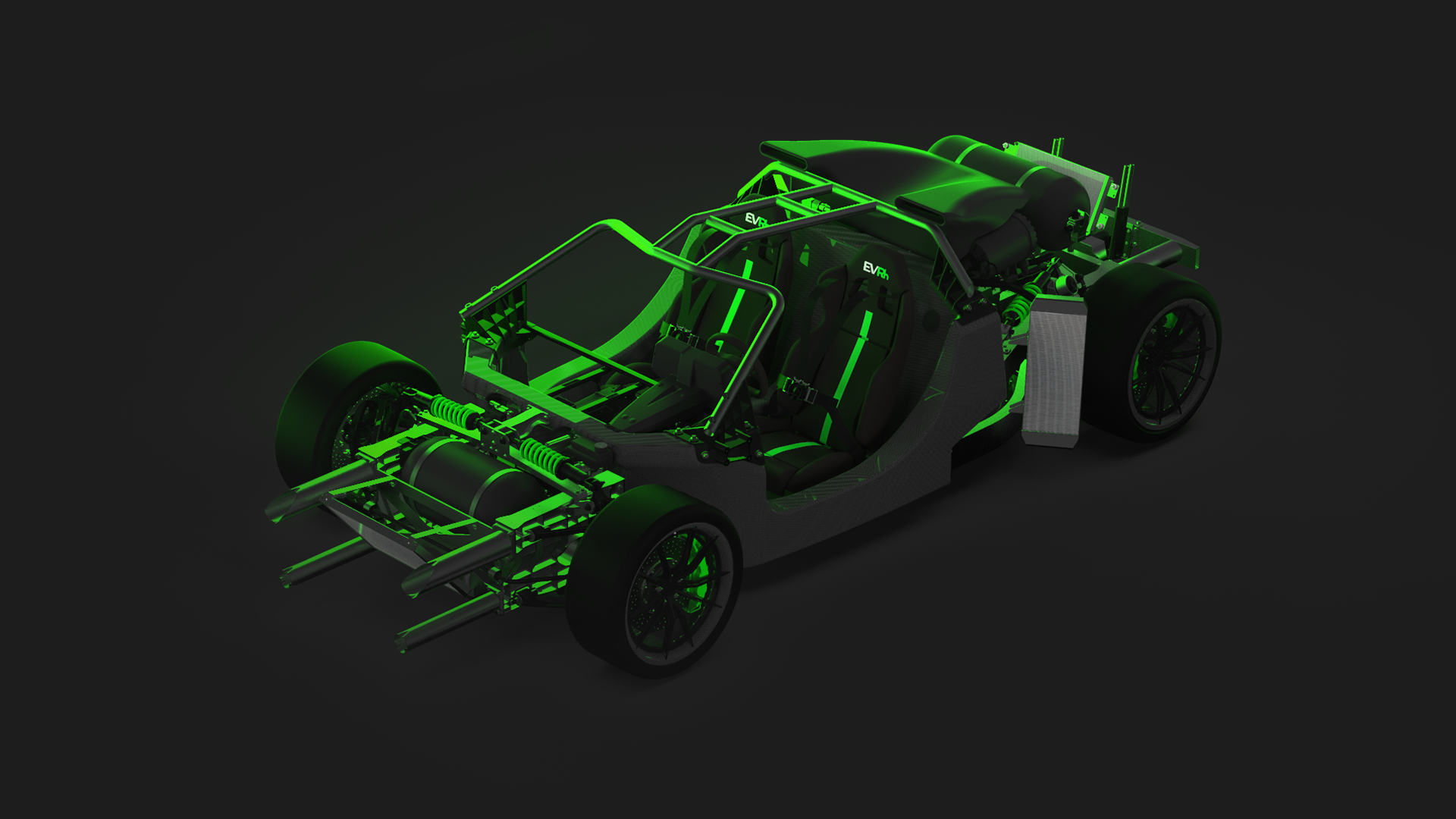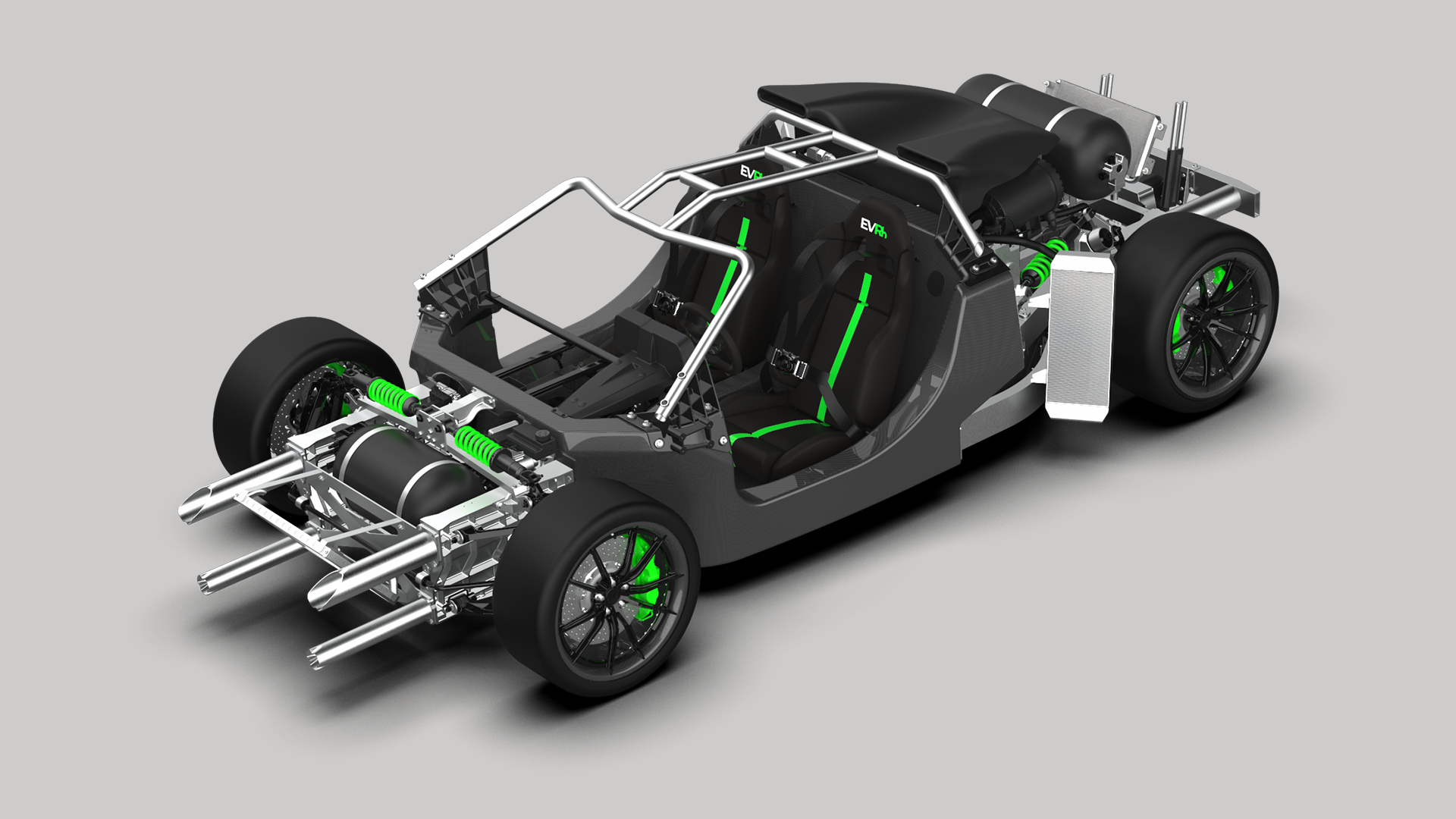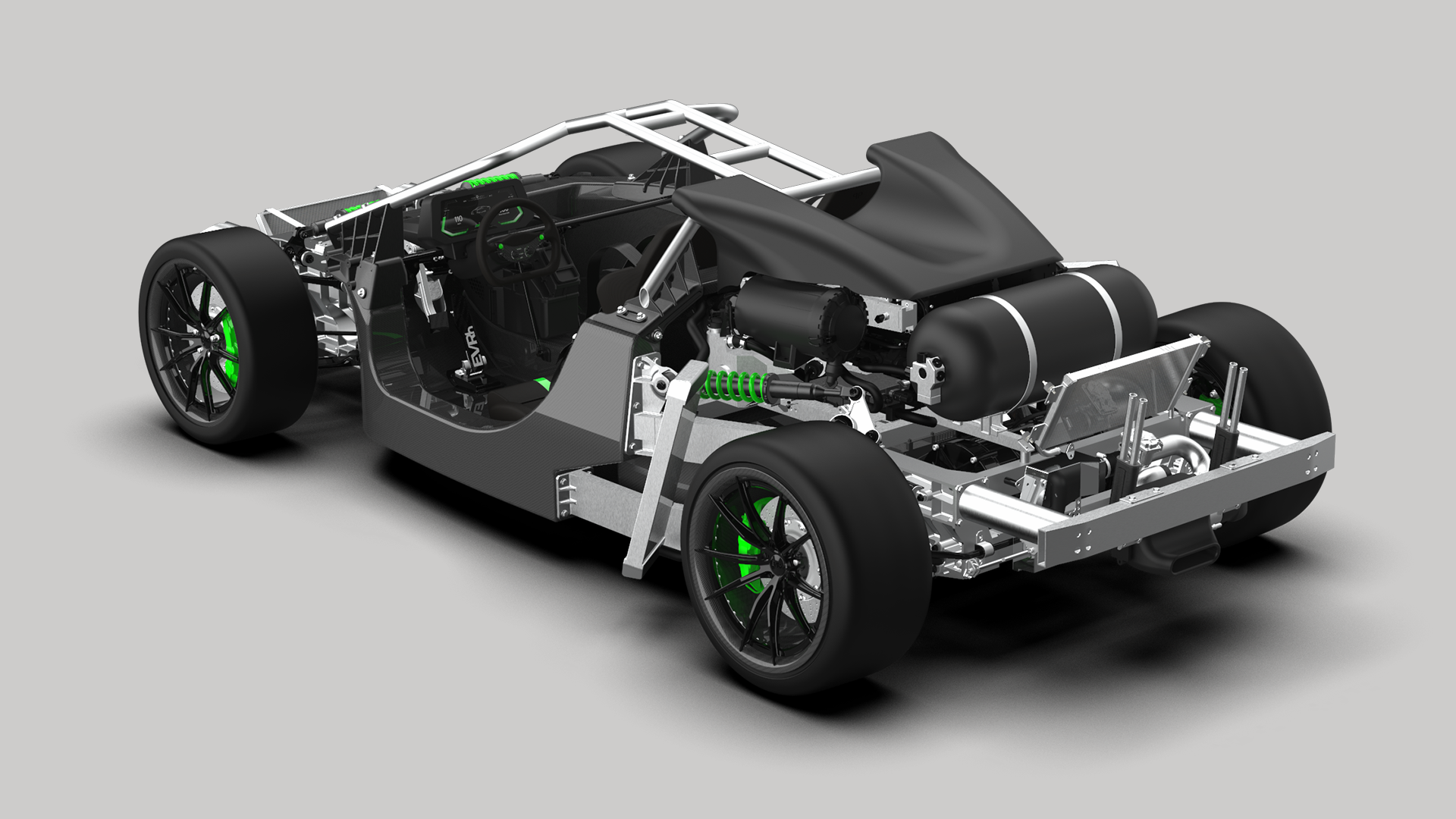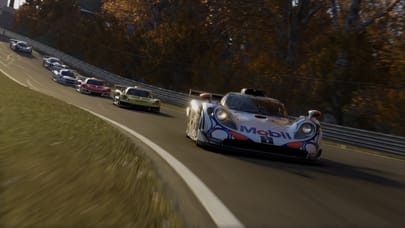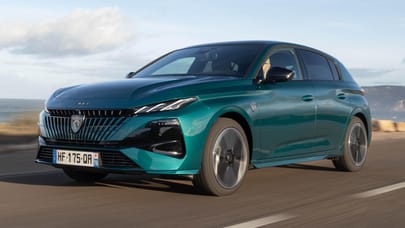
WAE Technologies reveals hydrogen hypercar platform capable of a 7m 20s 'Ring time
WAE Tech turns its attention to the building blocks of fuel cell technology
WAE Technologies is getting into hydrogen. Having already built its electric vehicle rolling chassis for battery electric hypercars, it’s now developing a similar solution for fuel cell solutions.
In a world where housebuilders make the shell and families make the home, this electric vehicle (EVR) rolling chassis concept is a platform to enable coachbuilders to create some fantastic, electrified four-wheeled things to put on the front cover of Top Gear magazine (out now, by the way).
Combining WAE Technologies’ vehicle and powertrain engineering know-how – it was once branded as Williams Advanced Engineering, remember – the Oxfordshire-based outfit is hoping to demonstrate the potential of hydrogen hybrid powertrain systems to the willing participants of the Cenex Low Carbon Vehicle (LCV) Show this week.
The brand tells us it's using ‘an industry-leading Fuel Cell Electric Vehicle (FCEV) battery pack at its core’. The hybrid system combines a 40kWh battery, delivering 430kW power, and a 120kW hydrogen fuel cell – creating an impressive 550kW total power. To give that some context, the fuel-cell cars of the BMW iX5 hydrogen-powered fleet are each capable of 125kW.
Made of a lightweight composite, the fuel tank and battery pack sit in the middle of the vehicle to optimise weight distribution. It's a turn-key solution with a vehicle weight of just under two tonnes, giving it a sub 2.5-second 0-62mph time and enabling a range of over 370 miles. WAE Tech also estimates it'd lap the Nürburgring in less than seven minutes and 20 seconds.
WAE Technologies reckons it's suitable for track-only projects and all-wheel- or rear-wheel-drive road-going models 'of both open-roof Targa and fixed-roof GT style' designs. The brand has kept its options for clients well and truly open, saying the thing 'has been designed from day one to allow for such flexibility'. Smart thinking.
These days, use cases for h2 are as abundant as the element itself – with many effective examples of application in the commercial vehicle world, where continuous fuel supply is necessary.
The reality of hydrogen for use in passenger cars is hard to scale and harder to justify for a number of reasons – we'll let you guys get into those reasons in the comments section below. Go!
Top Gear
Newsletter
Thank you for subscribing to our newsletter. Look out for your regular round-up of news, reviews and offers in your inbox.
Get all the latest news, reviews and exclusives, direct to your inbox.
Trending this week
- Long Term Review
Life with a 500bhp BMW 550e: do you really need an M5?




